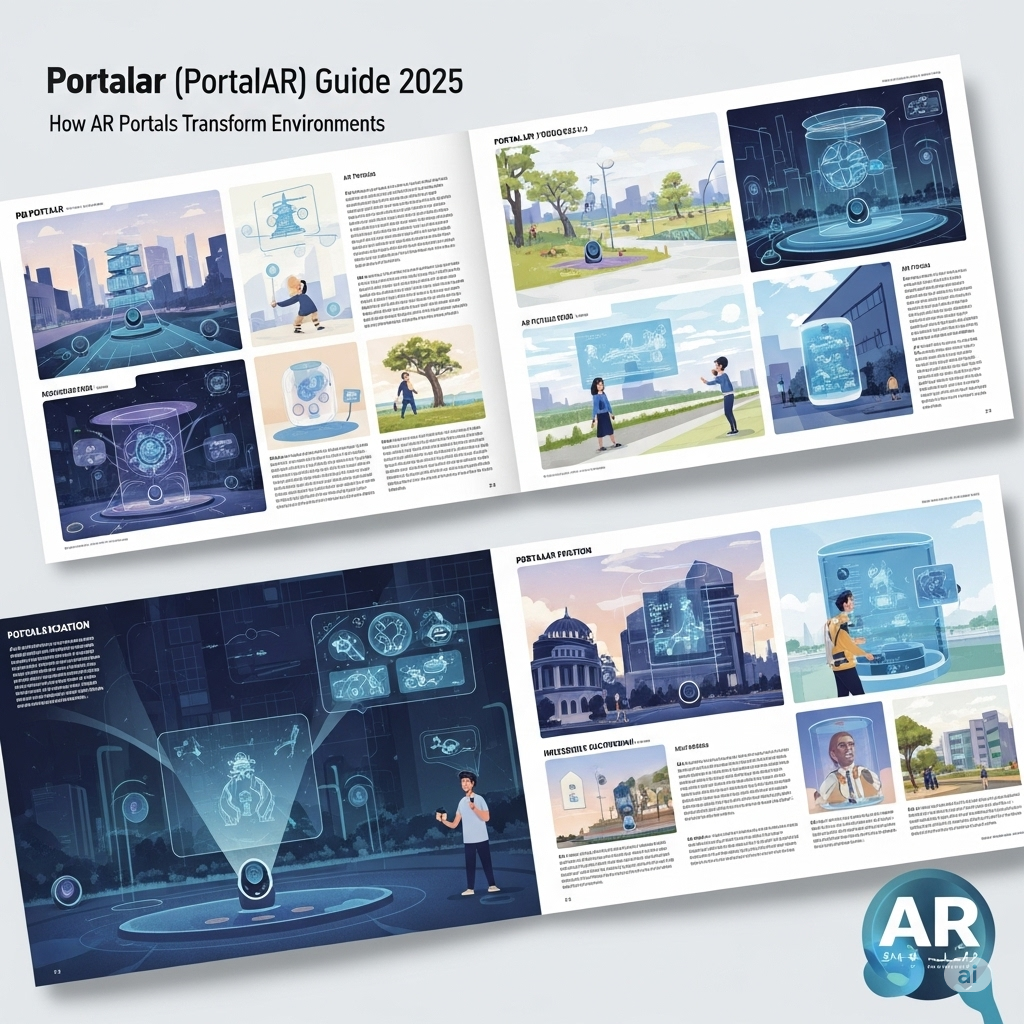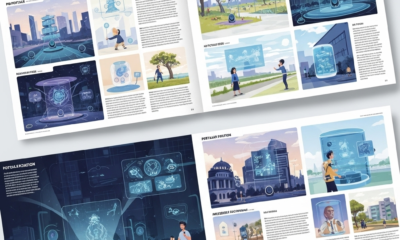Tech
The Future of Photography: Can AI Replace the Photographer?

Can AI Replace Photographers in the Future?
AI technology has the potential to replace photographers due to advancements in image generation, allowing AI systems to create realistic images without human intervention. Companies like DALL-E, Stable Diffusion, and Midjourney have demonstrated AI’s ability to generate images resembling photographs quickly. Ethical concerns arise regarding AI-generated art, particularly related to intellectual property rights and the potential exploitation of original creators’ work. The future implications of AI image creators are significant, as they pose a threat to professional photographers and visual artists. By automating tasks such as responding to internet trends, creating content for social media, e-commerce, and advertising, and generating visuals for websites without human input, this technology could render photographers unnecessary for image creation.
The introduction of advanced AI image creators raises not only financial concerns for photographers but also mental health implications. The prospect of AI replacing jobs that individuals are passionate about can have emotional impacts. As AI technology advances and potentially replaces human creatives in various industries, it is crucial to consider the broader societal implications beyond economic factors.
Challenges Posed by AI Image Creators
AI image creators face challenges related to bias in generated images, perpetuating stereotypes, and biases in outputs. Tools have been criticized for depicting white male CEOs, portraying women in stereotypical roles, and associating dark-skinned men with criminal activities. These biases raise ethical concerns about the accuracy and harm caused by such representations.
Efforts to promote diversity in AI-generated images have led to unintended consequences, including backlash for potentially inappropriate depictions of historical figures. The use of internet data poses challenges due to inaccuracies and misinformation, risking the propagation of false or outdated content through generated images. AI tools struggle to discern between reliable and unreliable sources, potentially resulting in misleading visual outputs that lack factual accuracy. Legal and ethical issues also arise regarding intellectual property rights and copyright infringement in AI-generated images. Lawsuits have been filed against companies for using copyrighted material without permission. The legal landscape surrounding generative AI is complex, raising questions about content ownership and liability for users disseminating misleading or infringing visual content.
Implications for the Photography Industry
The rise of AI image creators poses a significant challenge to photographers across various genres, including commercial, portrait, and product photography. As AI systems become more sophisticated and capable of mimicking different styles and techniques, there is growing concern that they could replace human photographers in certain areas. For instance, AI-generated images may be used in advertising, e-commerce product photography, and other visual content creation tasks traditionally handled by photographers.
Preparing for the Future
To prepare for the potential impact of AI on the photography industry, professionals may need to adapt their skills and embrace technology as a complementary tool rather than a replacement. Developing unique artistic styles, focusing on creative storytelling, and leveraging personal connections with clients are strategies that can help photographers differentiate themselves from AI-generated content. Additionally, staying informed about advancements in AI technology and exploring new opportunities for collaboration with AI systems can help photographers navigate the evolving landscape of visual art creation.
In conclusion
AI technology has the potential to replace photographers in the future, as advancements in image generation allow AI systems to create realistic images without human intervention. This raises ethical concerns regarding intellectual property rights and the potential exploitation of original creators’ work. AI image creators also face challenges related to bias in generated images, perpetuating stereotypes and biases in outputs. The rise of AI image creators poses a significant challenge to professional photographers across various genres, and professionals may need to adapt their skills and embrace technology as a complementary tool to prepare for the potential impact of AI on the photography industry.
Tech
DIY Solar Panel Setup for Home: Save Energy & Money

🌞 Introduction
Want to cut down your electricity bills and reduce your carbon footprint? A DIY solar panel setup for home might be the solution you’re looking for. With solar technology becoming more affordable and efficient, more homeowners are turning to solar power as a long-term investment in sustainability.
In this guide, we’ll break down everything you need to know about setting up a solar panel system yourself—from equipment selection to installation and maintenance. Whether you’re a total beginner or somewhat handy, you’ll walk away ready to go solar, save money, and take control of your home’s energy use.
⚡ Why Choose a DIY Solar Panel Setup for Home?
💰 Cost Savings
One of the biggest advantages of going DIY is saving on labor costs. Hiring professionals can cost thousands, while a DIY setup significantly lowers your total investment.
🌱 Environmental Impact
Solar power is clean and renewable. A typical home system can reduce 3 to 4 tons of carbon emissions annually.
💡 Energy Independence
Producing your own electricity reduces dependence on utility companies and protects you from rising energy prices.
🧰 What You Need for a DIY Solar Panel Setup
Before diving into the installation process, gather these key components:
1. Solar Panels
-
Choose monocrystalline for higher efficiency.
-
Polycrystalline is cheaper but slightly less efficient.
2. Inverter
-
Converts DC (from panels) into AC (for your home).
-
Types: String inverter, microinverters, hybrid inverters.
3. Charge Controller
-
Regulates voltage and current from panels to batteries.
-
Prevents battery overcharging.
4. Battery Bank (Optional but Recommended)
-
Stores excess power for use during night or outages.
-
Lithium-ion batteries are ideal but expensive.
5. Mounting System
-
Roof mounts or ground mounts, based on your space.
-
Ensure they’re durable and weather-resistant.
6. Wiring and Connectors
-
Solar-grade cables (MC4 connectors recommended).
-
Proper fuses and circuit breakers for safety.
7. Net Meter (Optional)
-
For grid-tied systems to earn credit on your power bill.
🛠️ Step-by-Step: How to Install DIY Solar Panels at Home
🔍 Step 1: Assess Your Energy Needs
-
Review your electricity bills (monthly kWh usage).
-
Decide whether to go off-grid, grid-tied, or hybrid.
📐 Step 2: Site Evaluation & Solar Access
-
Use tools like PVWatts or Google Project Sunroof.
-
Ensure your roof gets at least 5-6 hours of direct sunlight daily.
🧮 Step 3: Calculate System Size
-
Average home uses ~900 kWh/month.
-
A 5 kW system (~15-20 panels) usually covers this.
🛒 Step 4: Purchase Equipment
Buy from trusted suppliers with warranty options. For top-tier solutions, check out Circle Solar, a leader in sustainable solar energy solutions.
🔧 Step 5: Install Mounting & Panels
-
Attach the mounting system to your roof or ground.
-
Secure panels onto the racking system.
🔌 Step 6: Connect Electrical Components
-
Wire panels → charge controller → battery bank → inverter → home grid.
-
Ensure all safety disconnects and grounding are in place.
📋 Step 7: Inspection & Activation
-
Get local authority inspection if required.
-
Turn on the system and monitor output via your inverter app or meter.
🔄 Maintenance Tips for Long-Term Efficiency
-
Clean panels 2-3 times a year to remove dust and debris.
-
Check wiring annually for signs of wear or corrosion.
-
Monitor performance with apps or online dashboards.
🧠 Pro Tips for DIY Success
-
Start small: Begin with a portable or single-panel system if you’re new.
-
Take safety seriously: Wear protective gear and follow all electrical codes.
-
Consult your utility provider: Especially for grid-tied systems.
🌐 Real-World Success: Why People Are Going Solar
More and more UK residents are adopting DIY solar power to fight rising energy costs and embrace a sustainable lifestyle. Platforms like Space Coast Daily regularly feature success stories and resources on renewable energy—proving that the solar movement is thriving.
✅ Conclusion: Ready to Harness the Sun?
Installing a DIY solar panel setup for home is not just a trend—it’s a smart investment in your future. With the right tools, planning, and guidance, you can generate your own clean electricity and gain true energy independence.
So, are you ready to start your solar journey? Bookmark this guide, explore Space Coast Daily for the latest in sustainable energy trends, and consider checking out Circle Solar for premium components that last.
❓ FAQ: DIY Solar Panel Setup for Home
Q1: Is it legal to install solar panels myself?
A: Yes, in most regions, DIY installations are legal. However, check your local codes and permit requirements.
Q2: How much does a DIY solar system cost?
A: Expect to spend between £3,000 to £6,000, depending on system size and quality.
Q3: Can I run my entire house on solar?
A: Yes, with a properly sized system and battery backup, you can power your whole home.
Q4: How long do solar panels last?
A: Most panels come with a 25-year warranty and can last even longer with proper care.
Q5: Do I need batteries for my solar system?
A: Batteries are optional but useful for off-grid setups and backup during outages.
Tech
What is Janitor AI? Features, Use Cases & How to Use It Safely in 2025

📝 Introduction
Artificial intelligence is rapidly transforming how we interact online, and Janitor AI is one of the most buzzed-about names in the chatbot space—especially for users looking for customizable, conversational, and even NSFW AI interactions.
Whether you’re exploring it for entertainment, roleplay, or productivity, this guide covers everything you need to know about Janitor AI in 2025—from how it works, its features, limitations, and even the controversy surrounding it. If you’re curious, cautious, or ready to dive in, this is your ultimate reference.
🤖 What is Janitor AI?
Janitor AI is an advanced AI chatbot platform that allows users to interact with a variety of characters—ranging from anime-style bots to customizable virtual personalities. Unlike traditional AI chat tools, Janitor AI focuses heavily on character roleplay, storytelling, and human-like interaction.
Many users have been drawn to the platform due to its allowance (at times) for NSFW (Not Safe For Work) conversations, making it popular among adult users. However, its capabilities extend beyond that.
🔹 Key Features:
-
Character-based AI chats (custom bots)
-
NSFW and SFW modes (optional)
-
GPT-based responses (OpenAI or Kobold API supported)
-
Voice synthesis (in some versions)
-
Public character library
📌 Janitor AI Use Cases in 2025
Despite the controversy, Janitor AI is being used for several legitimate and interesting purposes:
1. Roleplay & Storytelling
Writers and fans use the platform for:
-
World-building
-
Character interaction testing
-
Generating dialogues for scripts and comics
2. Entertainment & Fun
-
Anime fan chats
-
Simulated romantic convos
-
Gaming companion bots
3. Mental Health & Venting
Some users engage with soft-spoken bots to:
-
Simulate therapy
-
Talk out problems
-
Seek non-judgmental conversation
4. Productivity Simulation
-
Practice job interviews
-
Language learning through simulated chats
-
Train customer service interactions
🛠️ How Janitor AI Works
Janitor AI is not powered by its own LLM (Large Language Model). Instead, it connects with external APIs like:
-
OpenAI (ChatGPT) – for safe, filtered interactions
-
KoboldAI or Pygmalion – for unfiltered/NSFW content
-
Local Models (e.g., SillyTavern) – for privacy-focused chats
To use Janitor AI:
-
Sign up and login at [janitorai.com] [EXTERNAL LINK]
-
Choose a character from the public library or create your own.
-
Connect an API key (OpenAI or KoboldAI).
-
Start chatting with the bot of your choice.
⚠️ Note: You must configure API settings correctly. Many users get errors if APIs are not linked.
🚫 NSFW & Content Safety: The Big Debate
One of the reasons Janitor AI became viral is because it allowed NSFW chats, especially using Pygmalion or OpenRouter APIs.
However, this has sparked massive debates online, especially around:
-
AI ethics
-
Age restrictions
-
Content moderation
In 2024-2025, Janitor AI removed direct NSFW support on its main platform, but users still bypass this using external APIs or local installations.
🔒 Tips for Safe Use:
-
Use a local model if privacy is a concern.
-
Never share real personal data.
-
Check if the bot creator has moderation settings enabled.
-
Keep SFW mode on if under 18 or in public/shared devices.
📈 Why Janitor AI is So Popular in 2025
| Reason | Description |
|---|---|
| Customizable Bots | Create your own characters with unique personalities |
| Roleplay Freedom | Many bots simulate romantic or fantasy dialogues |
| Easy to Use | No coding needed, simple UI |
| Cross-Platform | Use in browser, Discord bots, or third-party apps |
| Large Community | Public bots, shared prompts, guides available |
🔄 Janitor AI Alternatives (2025)
If Janitor AI doesn’t suit your needs, here are some trending alternatives:
1. Character.AI
-
Family-friendly
-
No NSFW content
-
Great UI & mobile app
2. Chai App
-
Available on Android & iOS
-
Tons of user-generated bots
-
Less control over filtering
3. Pygmalion AI + SillyTavern
-
Fully unfiltered
-
Requires setup
-
Works offline with local LLMs
4. OpenAI Playground (ChatGPT)
-
Reliable for clean conversations
-
Limited in roleplay compared to Janitor
📌 For a comparison article, see: [Janitor AI vs Character AI – Which is Better?] [INTERNAL LINK]
💻 Developer & Community Tools
If you’re a developer or enthusiast, Janitor AI allows:
-
Bot creation: Customize prompts, memories, behavior.
-
API linking: Choose your preferred backend model.
-
Community uploads: Share your bot with others.
-
Third-party mods: Chrome extensions, Discord integrations
Some devs even run private versions of Janitor AI using open-source tools like:
-
JanitorAI-Local
-
Sillytavern UI
-
KoboldCPP
✅ Pros and Cons
| Pros | Cons |
|---|---|
| Deep roleplay capabilities | May violate ethical/age guidelines |
| Supports multiple AI backends | Complex setup for unfiltered APIs |
| Active community & support | NSFW misuse concerns |
| Free to use (with API) | Not beginner-friendly without guides |
📌 Conclusion (with Links Added)
Janitor AI is much more than just another chatbot it’s a powerful, flexible platform for those looking to dive into immersive conversations with fictional, realistic, or AI-generated characters. Whether you’re writing a fantasy novel, simulating a companion, or just killing time, it opens up countless possibilities.
But with great flexibility comes responsibility. Use Janitor AI ethically, protect your privacy, and respect the boundaries of content guidelines.
Want to explore more ways to leverage AI? Check out our guide on
👉 How to Make Money with ChatGPT in 2025 – 10 Proven Methods
Or visit our homepage for more trending AI tools, tech updates, and tutorials:
🌐 SpaceCoastDaily.co.uk
❓ FAQ – Janitor AI 2025
Q1: Is Janitor AI free to use?
Yes, the platform is free, but you’ll need to connect your own API key (like OpenAI, Kobold, or Pygmalion).
Q2: Is NSFW content still available?
Officially, NSFW content is restricted. However, users can still access it via third-party APIs or local setups.
Q3: Is Janitor AI safe?
It’s generally safe if you use trusted APIs and don’t share personal info. For NSFW use, caution is advised.
Q4: Can I use it without coding?
Yes, Janitor AI has a user-friendly interface. You only need to copy-paste API keys.
Q5: What is the best API for Janitor AI?
For filtered, ethical use: OpenAI. For unfiltered creative freedom: KoboldAI or Pygmalion.
Tech
Portalar (PortalAR) Guide 2025: How AR Portals Transform Environments

📝 Introduction
Imagine stepping through a glowing doorway and instantly finding yourself in a lush rainforest, a futuristic city, or another dimension entirely—all through your smartphone screen. That’s exactly the magic behind Portalar (PortalAR), an augmented reality concept that blends real-world environments with immersive virtual spaces.
In this article, we’ll explore what Portalar is, why it’s a game-changer in AR, and how you can create your own interactive portals. Whether you’re a developer, a creative enthusiast, or simply curious, this guide will take you through the world of AR portals step by step.
🌟 What is Portalar (PortalAR)?
Portalar, also known as PortalAR, is a concept where users create and interact with digital “portals” in real-world spaces using AR technology. These portals serve as gateways to different virtual environments. Inspired by filters like Snapchat’s Stranger Things portal and innovative apps like Rainforest Garage, this concept allows for:
-
Multi-environment interaction: Users can walk through multiple themed AR spaces.
-
Creative exploration: Each portal is a personalized or interactive experience.
-
Immersive storytelling: Great for gaming, education, and entertainment linkedin.com+4medium.com+4medium.com+4.
🔍 Why Build a Portalar App?
1. Skill Development
Building Portalar helps developers grow in AR, UX, and 3D modeling—essential for careers in emerging tech .
2. Rising Market Demand
With major players like Apple, Meta, and Google investing heavily in AR, early innovation in portals positions you ahead in the next tech wave .
3. Diverse Applications
Use cases range from educational experiences and virtual tourism to immersive marketing and gaming demos—opening doors to various industries.
🛠️ How to Create Your Own Portalar Experience
Follow this roadmap to start building AR portals:
Step 1: Choose Your AR Platform
Select an AR SDK like ARKit, ARCore, or a cross‑platform engine such as Unity or Unreal Engine.
Step 2: Define the Portal Frame
Design visual anchors (rings, doors, frames) to mark the entry to your virtual world.
Step 3: Build the Virtual Environments
Model vivid environments—like rainforests or sci‑fi worlds. Use tools such as Blender or Maya for 3D assets.
Step 4: Track Real‑World Positioning
Use plane detection and tracking features to anchor portals in physical spaces.
Step 5: Manage Scene Transitions
Implement smooth transitions (e.g. fade, pop) when users walk “through” the portal.
Step 6: Add Interactive Elements
Include sounds, animations, and generated events to make the portal environment engaging.
Step 7: Optimize for Performance
Ensure smooth frame rates and low latency for a seamless AR experience.
🕹️ Use Cases & Example Apps
-
Inspiration: Snapchat’s Stranger Things Portal – A well-known example of AR portal technology medium.com+1medium.com+1
-
Rainforest Garage by 8ninths – Letting users build and walk through personalized rainforest scenes medium.com
-
Educational Portals – Historical simulations, molecular walkthroughs, or space exploration zones
-
Virtual Tourism – Stand in your living room and instantly be on a tropical beach or city landmark
-
Marketing & Demos – Brands using portals to create immersive product showcases
🎯 Best Practices for Effective Portalar Design
-
Intuitive Portal Anchor – Make the portal visually compelling and recognizable.
-
Contextual Awareness – Portals should adapt to real-world lighting and surfaces.
-
Seamless Transitions – Use polished effects for entering and exiting portals.
-
Performance Prioritized – Test on multiple devices to eliminate lag.
-
Interactive Depth – Add depth through collectibles, audio triggers, or physics-based interactions.
✅ Pros & Challenges of Portalar
| Pros | Challenges |
|---|---|
| Highly immersive & memorable experience | Requires advanced AR and 3D skills |
| Versatile applications across industries | Performance issues on older devices |
| Enhances user engagement dramatically | Needs realistic visuals & interactivity |
| Opens doors to educational innovation | Higher dev time compared to static apps |
🧭 Conclusion
Portalar (PortalAR) represents the next frontier of AR—bringing virtual worlds right into your physical space through interactive gateways. From inspiring educational content to immersive brand experiences, Portalar offers limitless possibilities. For developers and creatives, it’s a prime opportunity to craft unforgettable AR experiences.
Want to build your first AR portal? Start with a basic scene and plane detection in Unity—experiment with virtual entrances and watch your ideas come to life. Stay tuned for “Part 2” where we’ll share a full demo and code walkthrough!
❓ FAQ – Portalar (PortalAR)
Q1: Do I need coding experience to build Portalar?
Basic knowledge of Unity or Unreal and scripting (C# or Blueprints) is required, but tutorials are readily available.
Q2: What devices support Portalar experiences?
Most modern iOS and Android devices compatible with ARKit or ARCore can run basic experiences.
Q3: Can Portalar be used in education?
Absolutely—there are examples like virtual biology labs, historical site models, and interactive storytelling environments.
Q4: How is Portalar different from traditional AR filters?
Portalar offers spatial depth and immersive 3D environments, not just flat overlays or animations.
Q5: What’s next after Portalar Part 1?
Part 2 will cover code implementation and live demos—perfect for hands-on learning and prototyping.
-

 news4 days ago
news4 days agoBinomo Scam Exposed: Real Truth Behind the Trading App You Must Know in 2025
-
Business3 weeks ago
Why Bulk Custom Playing Cards Are the Secret Weapon for Brand Visibility and Creative Projects
-
Tech3 weeks ago
Revolutionizing Marketing with AI: How Visionation Helps Brands Dominate Google Rankings
-

 news1 week ago
news1 week agoJames Webb Telescope News: Exploring the Frontiers of the Universe
-

 Tech6 days ago
Tech6 days agoPortalar (PortalAR) Guide 2025: How AR Portals Transform Environments
-

 Tech4 days ago
Tech4 days agoWhat is Janitor AI? Features, Use Cases & How to Use It Safely in 2025
-

 news3 days ago
news3 days agoChatGPT vs Google Gemini: Which AI Wins in 2025?
-

 Gaming6 days ago
Gaming6 days agoBest Gaming Accessories Under $50 in 2025 – Ultimate Budget Gaming Upgrades







